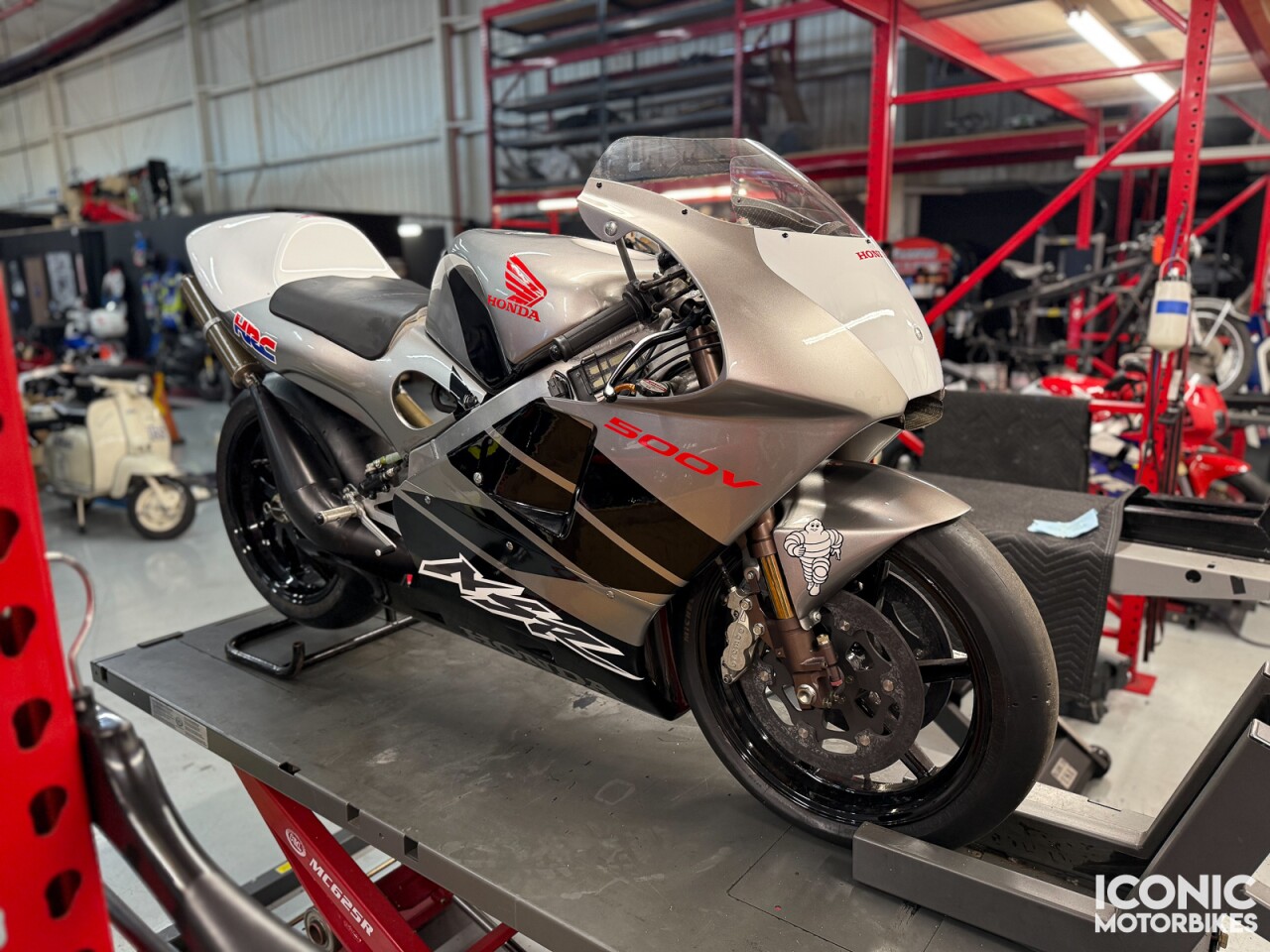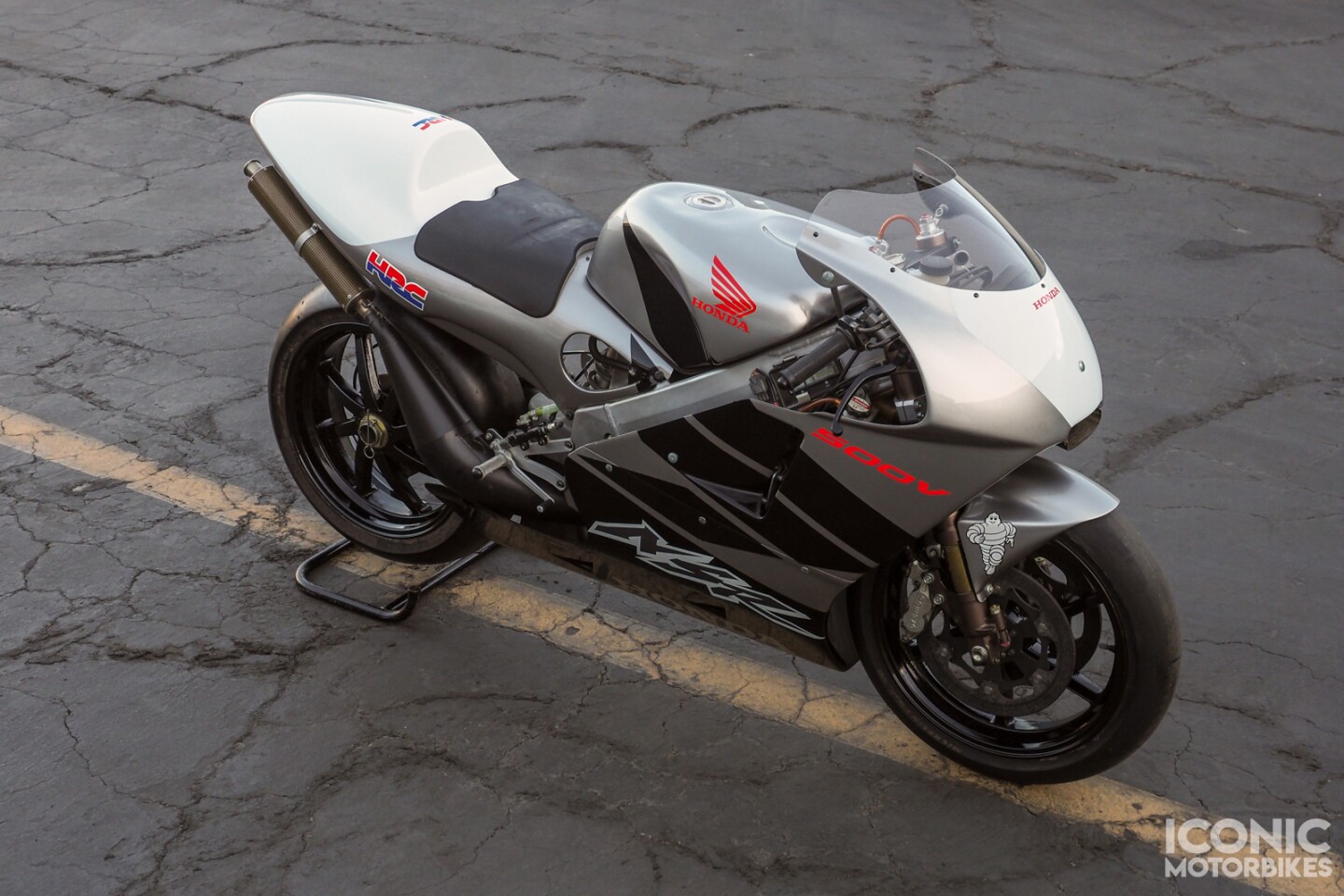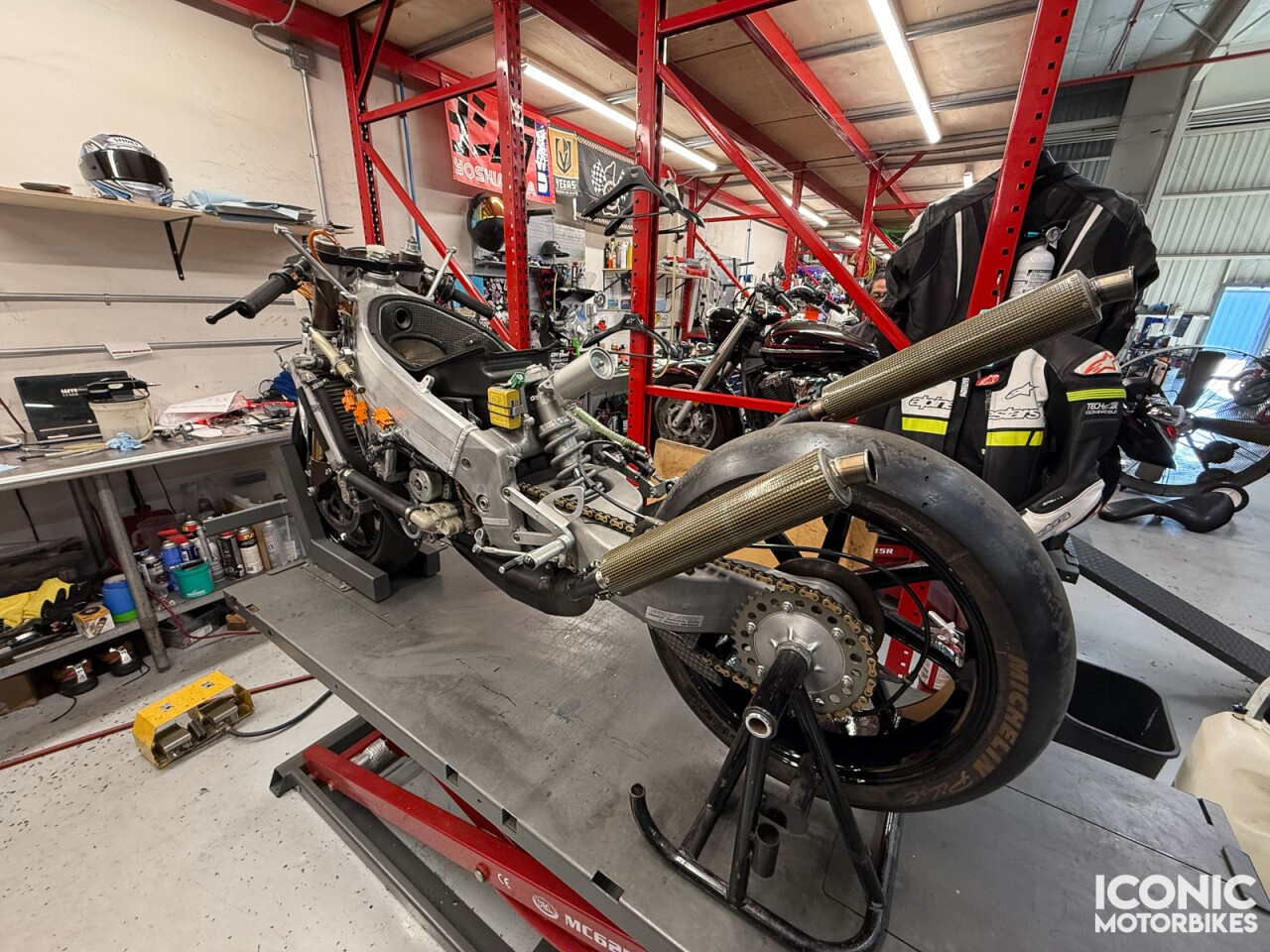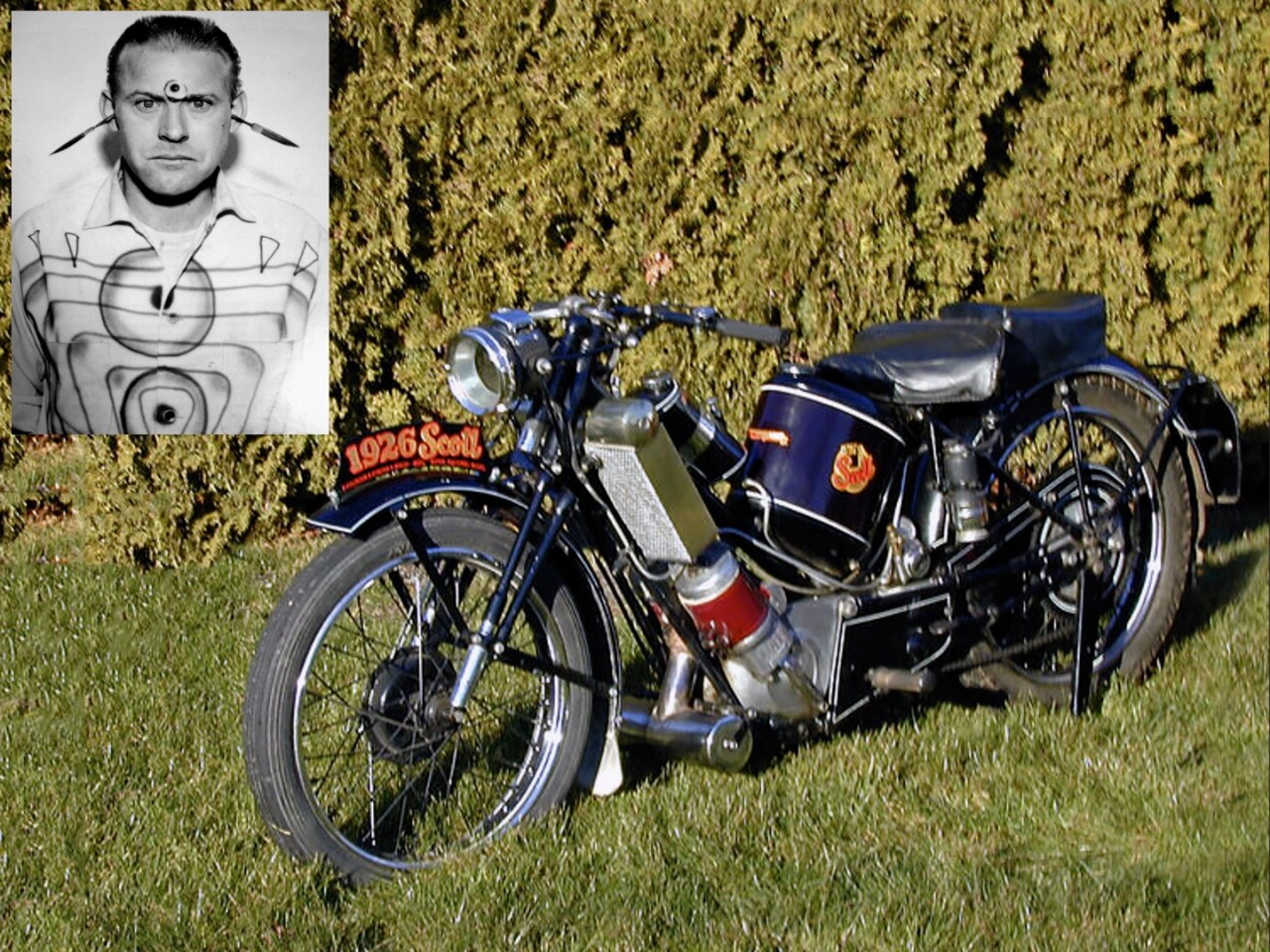A 1997 Honda NSR500V sold for $267,607 at Iconic Motorbike Auctions during the 2024 Christmas Rush, and no-one noticed. The $267,607 price surpasses the previous record for a Japanese motorcycle at auction (a Honda RC213V-S at $237,700), and the previous record (a Honda CB750 prototype at $221,600).
The 1997 Honda NSR500V that set all the new auction records had been in storage for 20 years and was purchased direct from HRC, unstarted. where it had only ever been used as a stationary display at promotional events in period.
The one-of-20 V-twin racer was re-crated by HRC in Japan following its promotional life, and sent to its American owner who left it that way … along with a complete unused spares kit suitable for going Grand Prix racing, until this unboxing two decades later.
Most former Grand Prix bikes that reach auction have a racing provenance, but this one is an absolute unicorn – a grand prix racing bike untouched from new, with spares.
Honda NSR500V VIN NUMBER ONE (001) Two Stroke Icon: Up Close & Personal!
Following the extraordinary $267,000 price achieved by Iconic in December, we came across a video of the guys at Iconic Motorbike Auctions uncrating the bike to ready it for auction, and it’s quite an experience to see the hardcore enthusiasts at the auction house getting emotional at the event.
That’s Olly, on the bike above, a former Grand Prix mechanic who worked on an identical machine for four seasons in period, so you can imagine the emotions you get to witness in the video, and the in-depth knowledge that pours out when they get him talking.
Honda’s dominance of motorcycle history has historically received little attention outside of its home country, but its immense shadow is slowly being recognized by the collectors of the world, so Honda memorabilia can be expected to continue to rise in value for the foreseeable future.
Honda has been the world’s largest motorcycle manufacturer since 1959. Gottlieb Daimler’s Reitwagen was produced in 1885, so motorcycling is 140 years of age. In the next couple of years, Honda will have been the largest motorcycle manufacturer in the world for half of recorded history – the last half.

It has sold so many more motorcycles than any other marque, that we can’t work out which manufacturer is second – all we know is that Honda is so far in front that second doesn’t even count. Honda’s cumulative sales will soon surpass a half a billion motorcycles. This dominance will inevitably eventually be recognized on the auction block.
Throughout that 66-year time at the top, Honda has reinvested roughly 10% of its profits each year in R&D. Its technological knowledge/IP bank is immense.
Regularly throughout Honda’s reign, the company has performed masterful technological feats to achieve its goals, and this bike is not one of them. The list of Honda’s triumphant motorcycle models is too long to start, but this bike captures the spirit of the two-stroke racer perhaps better than any other.

Honda almost always achieves its goals, with the one notable exception being its failure to beat the two-stroke hordes with a four-stroke in Grand Prix racing. It had decades of precedents to suggest it could engineer its way around the problem, but as has since been recognized, it was simply too far beyond our current understanding of the internal combustion engine and material science to get it to happen.
Even Honda can’t deny the laws of physics.
This article by Kevin Cameron explains what happened in granular detail – worth a read if you’re a Honda fan, and doubly so if you’re not. In taking on that challenge, Honda embarked on one of the greatest technological quests of all time. It built a faux V8 with elliptical pistons and … then used what it learned to dominate Grand prix Racing for another 20 years.
When it couldn’t beat the two-strokes with a four-stroke, Honda built a triple cylinder two-stroke that won several world titles, followed by a V4 two-stroke that won a lot more world titles. When Grand Prix teams, Honda subsidiaries and distributors from around the world were kicking the door down trying to get a competitive Honda GP bike for their international racing needs, Honda created this bike.
Honda was already winning most races in MotoGP with a procession of the best of all-time punting the factory V4, so the company ventured in the direction of simplicity and functionality for the bikes that would escape the Honda family.
The NSR500v is a relatively simple 500cc v-twin two-stroke based on the age-old formula of light weight and usable power, and might just be the ultimate privateer over-the-counter racer. It gave away 50 horsepower to the factory exotica, but it was only the size and weight of a 250cc Grand Prix bike, weighing 30 kg (66 lb) less than the straight line rocket ships.
Being so much lighter, the laws of physics worked in Honda’s favor, and when the company rolled out the first iteration at the 1996 Malaysian Grand Prix it surprised everyone, including Honda, when Tady Okada put the bike on pole position in its maiden race.
It didn’t win, but it validated the direction Honda had chosen.
A Grand Prix win ultimately escaped the over-the-counter racer but it finished on the podium at Grands Prix many times with a best of two second places, both at the demanding and twisty Phillip Island circuit in Australia.
What the NSR500v gave away in straight line speed, it almost made up for with its superb handling, high corner speed, precise steering and with 30 kg less to stop, the little V-twin’s braking markers were in a different postcode.
It also had that magical ingredient that blesses any human or machine that possesses it – forgiveness. It had a torquey, flexible power delivery and was easy to ride fast. Most of the bikes went to deserving young riders on the way up, giving them an ideal platform to display their capabilities.

Only 20 NSR500v motorcycles were produced by Honda Racing Corporation – two more were produced in a slightly different configuration in the final season before MotoGP rules changed and replaced the two-stroke era. The big difference was that unlike the NSR500 V4s which were leased to select international teams, the V2s were sold outright.
These very credible works racers escaped the captivity normally associated with exotica of this calibre. Most filtered down to national level competition once the MotoGP era arrived in international competition, and as ex-race bikes, a few notable NSR500v specimens have been to auction before.
There’s always a prior auction result that stands out in hindsight of a spectacular auction result, and in this case it’s the NSR500v campaigned by the Sultan of Slide, Gary McCoy. Many of those videos you’ve seen of McCoy drifting a Grand Prix bike speedway-style were done aboard an NSR500v. It sold for $67,800 in 2005.
The second highest price we can find for an NSR500v, was the GBP98,900 (US$127,838) that was fetched just a month before the sale of record-holding bike, in England, by another motorcycle auction house by the name of Iconic Auctioneers. It’s not the same company, but it is an elite level auction house in the European collectible motorcycle marketplace.
Finally, only one two-stroke has ever sold for more at auction, and it had a full hand of provenance, having been sold more as an artwork than a motorcycle, courtesy of the involvement of two of motorcycling’s most enigmatic crazies, Steve McQueen and Von Dutch.

We’ve covered McQueen’s motorcycles at auction previously: Steve McQueen’s ‘On Any Sunday’ Husqvarna: How a bike that sold for $1500 in 2008 sold for $230,000 in 2018 and Steve McQueen’s Midas touch poised to strike again where you will find dozens of examples of McQueen’s belongings having commanded prices many times their “book value” without his provenance.
The NSR500v that almost took the two-stroke auction record makes a wonderful performance contrast to the bike that still holds it.
The Scott Motorcycle Company folded during WW2, but a century ago, it produced a 600cc water-cooled two-stroke twin that cost double the price of a four-stroke, but was fast and reliable enough to finish third in an Isle of Man TT. It had a top speed of 70 mph (110 km/h), a 3-speed transmission with hand gear change, and weighed in at 147 kg (324 lb) dry.
The NSR has a top speed some 100 mph more than the Flying Squirrel, and weighs two-thirds as much.

